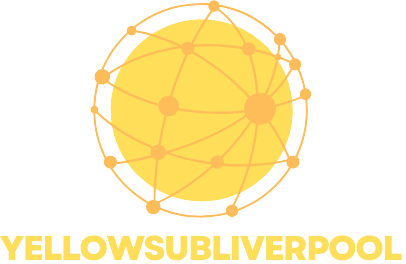Table of Contents
ToggleIn today’s fast-paced world, effective communication can feel like trying to herd cats—challenging and often chaotic. Teams need the right tools to keep everyone on the same page without losing their sanity. Whether it’s brainstorming ideas or tackling a project deadline, the right communication tools can turn confusion into collaboration faster than you can say “teamwork makes the dream work.”
Overview of Communication Tools for Teams
Effective communication tools streamline collaboration among team members. They facilitate the exchange of ideas, ensure everyone stays on the same page, and help manage project timelines. Popular tools include messaging platforms, video conferencing applications, and project management software.
Messaging platforms like Slack or Microsoft Teams allow for real-time conversations. Such platforms support channels for specific topics, enhancing focused discussions. Video conferencing tools such as Zoom or Google Meet enable face-to-face interaction, critical for remote teams. Screen sharing features within these tools improve understanding and help resolve issues quickly.
Project management software like Trello or Asana offers functionalities for tracking tasks and milestones. These tools provide visibility into team progress, assign responsibilities, and set deadlines. Integrating these platforms within the workflow can optimize the communication process.
In addition to these tools, collaborative document editing platforms like Google Workspace facilitate joint efforts in creating reports or plans. Multiple users can edit documents simultaneously, increasing efficiency and minimizing miscommunication.
Selecting the right tools depends on team size, project requirements, and specific communication needs. The variety of available tools can meet diverse preferences and working styles, ultimately fostering effective collaboration and enhancing overall productivity in teams.
Types of Communication Tools
Effective communication tools range from those that facilitate real-time interactions to those that allow for flexible communication. Understanding these tools helps teams select the best options for their needs.
Synchronous Communication Tools
Synchronous communication tools enable real-time interactions among team members. Examples include messaging platforms like Slack and video conferencing applications like Zoom. Teams benefit from quick decision-making and immediate feedback. Additionally, features such as screen sharing and video calls enhance collaboration during meetings. These tools foster engagement, especially in brainstorming sessions or urgent discussions. They improve clarity, reduce delays, and facilitate faster problem-solving, making them essential for teams that thrive on instant communication.
Asynchronous Communication Tools
Asynchronous communication tools allow team members to communicate without the need for simultaneous presence. Email and project management software like Trello exemplify this category. Teams can share updates and provide feedback at their convenience, reducing interruptions. Users can catch up on discussions and information at a flexible pace. This is particularly useful for remote teams operating in different time zones. Additionally, collaborative document editing tools like Google Workspace enhance this approach by allowing multiple users to contribute without overlapping schedules. As a result, teams optimize their workflow and maintain productivity despite varying availabilities.
Popular Communication Tools for Teams
Effective communication hinges on the right tools. Many options cater to diverse needs, enhancing collaboration and ensuring teams stay connected.
Tool 1: Slack
Slack serves as a powerful messaging platform that supports real-time communication among team members. It allows the creation of channels for specific topics, helping organize conversations and reduce clutter. Users can share files, integrate apps, and utilize bots to streamline workflows. Notifications can be customized, ensuring important messages aren’t missed. This tool promotes transparency and keeps everyone aligned on project goals.
Tool 2: Microsoft Teams
Microsoft Teams integrates seamlessly with the Office 365 suite, offering chat, video, and file-sharing capabilities in one platform. It supports collaborative workspaces where team members can co-edit documents, enhancing productivity. Teams can host virtual meetings with features like screen sharing and recording, making discussions more engaging. The app’s integration with other Microsoft tools ensures that teams have access to everything they need to succeed.
Tool 3: Zoom
Zoom has become a popular choice for video conferencing, providing high-quality audio and video capabilities. Its easy-to-use interface allows for quick setup of meetings, accommodating both small and large groups. Features like breakout rooms facilitate focused discussions, while screen sharing enhances collaboration during presentations. The recording option enables teams to revisit important conversations, ensuring that no valuable input is lost.
Benefits of Using Communication Tools for Teams
Effective communication tools enhance collaboration among team members and lead to better project outcomes. Increased efficiency comes from tools that streamline interactions, allowing teams to share ideas and updates quickly. Team morale improves as these tools foster a sense of connection, especially for remote workers who may feel isolated.
Flexibility in communication methods allows teams to adapt to different scenarios. Real-time tools like Slack and Microsoft Teams facilitate immediate feedback, enabling prompt decision-making. Asynchronous tools like email and project management software empower members to contribute at their convenience, accommodating different schedules and time zones.
Transparency becomes a hallmark of teams that use the right tools. Organized channels in platforms like Slack help clarify discussions and reduce misunderstandings. Access to a central hub for project information minimizes confusion over task assignments and deadlines.
Improved organization plays a key role in driving productivity. Project management tools such as Trello and Asana keep team members aligned on goals and responsibilities. Regular updates in these platforms maintain accountability, ensuring that everyone stays informed on progress and changes.
Enhanced collaboration crafts a dynamic environment for brainstorming and innovation. Video conferencing tools like Zoom and Google Meet create opportunities for face-to-face exchanges, inspiring creativity and deeper conversations. Collaborative document editing encourages simultaneous input, allowing teams to refine their ideas in real-time.
Overall, utilizing communication tools creates a collaborative culture that elevates teamwork and drives successful project execution.
Challenges and Considerations
Effective communication isn’t without its challenges. Team dynamics often shift due to diverse personalities and communication styles, leading to potential misunderstandings. Confusion can arise when asynchronous tools like email clutter inboxes, causing delays in critical discussions.
Establishing clear communication protocols remains essential. Without guidelines, team members might not utilize tools effectively, resulting in wasted time and resources. Choosing the right tool is crucial, as not every platform suits every team.
Technological proficiency varies among team members. Some individuals may struggle to navigate sophisticated platforms, hindering overall productivity. Ensuring all team members receive adequate training can mitigate this issue.
Navigating time zones poses unique challenges for remote teams. While asynchronous tools offer flexibility, they can also create gaps in communication. Prioritizing timely updates is vital to keep all members informed.
Data security is a significant concern when collaborating online. Selecting tools with robust security features protects sensitive information shared among team members. Organizations should assess tools for compliance with industry standards.
Lastly, balancing the use of different tools is critical. Over-relying on various platforms can lead to fragmentation. Streamlining communication channels helps maintain focus and enhances overall collaboration.
Effective communication tools are essential for fostering collaboration and enhancing productivity within teams. By choosing the right mix of synchronous and asynchronous tools, teams can navigate challenges and streamline interactions. These tools not only facilitate real-time conversations and project management but also promote transparency and accountability.
As teams adapt to diverse work environments and communication styles, the right tools can bridge gaps and minimize misunderstandings. Ultimately, investing in effective communication solutions empowers teams to work cohesively, innovate, and achieve their goals. Embracing these tools will lead to a more connected and efficient team dynamic, driving success in any project.







